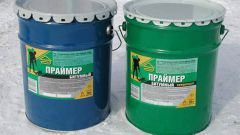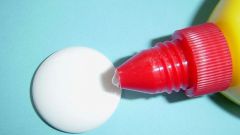The application of acrylic materials
Acrylic is used in painting, construction, modelling, woodworking.
Acrylic is very convenient and easy to use. Excellent for coating all surfaces or for painting.
Paint with acrylic can be on any surface, be it paper, wood, plastic, hardboard, etc. All surfaces, except white watercolor paper, require preliminary priming.
Priming is done for several reasons:
First, increased paint adhesion to the material.
Second, the primer allows you to hide all the flaws of the material such as cracks and scratches.
And thirdly, the advantage of the primer is to achieve smooth color coating paint.
Types of acrylic materials
For priming under acrylic using the following specific primers:
Alkyd primer
Is considered the highest quality primer, after the treatment which goes perfectly smooth workpiece. In some cases, intensely pigmented alkyd primer to create a semi-Matt film and enhance color saturation. Traditionally used to cover wooden and metal surfaces. Dries up to 24 hours.
Acrylic emulsion primer
Works for any material other than black metal, because it does not protect against corrosion. Used for priming plaster, cement and concrete foundations, wood, wood-vinyl and chipboard materials, brick, cardboard. It lowers the absorbency of the surface.
Has a high consumer importance – virtually odorless, water-soluble, dries quickly (2-4 hours).
Epoxy and polyurethane primers
It's the same epoxy or polyurethane paint, which is pre-diluted with water. Dries up to 8 hours.
Shellac primer for wood
On cutting the tree you can often see swirls, which appears resinous substance. Shellac primer serves as an insulating means for the stains that are pre-dissolved in water. The basis for the manufacture of such primer materials is the milky juice of the insect, with the addition of methyl alcohol. Dries up to 5 hours.
Primer for metal surfaces
Designed to protect the metal from corrosion. For each metal using the appropriate primer.
There are several varieties of this primer – Foundation can serve as zinc phosphate, chromate of zinc.
Non-ferrous metals are usually sold with a already factory treated.





